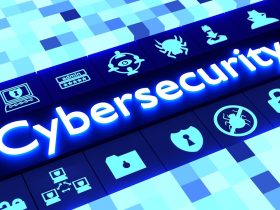As cyber threats continue to evolve in both sophistication and frequency, educational institutions worldwide are facing increased pressure to protect their digital infrastructure. South African universities are no exception, and many are turning to a Zero Trust cybersecurity model to safeguard their systems and data. Zero Trust is not just a buzzword—it’s a fundamental shift in how organizations approach security in an era where threats are ever-present, both inside and outside the network.
Understanding the Zero Trust Model
The Zero Trust model is based on the principle of “never trust, always verify.” Unlike traditional security models that rely on perimeter defenses (such as firewalls) to keep attackers out, Zero Trust assumes that threats could already be inside the network. As a result, every user, device, and application must be continuously authenticated and authorized, regardless of their location or role within the organization.
For universities, where networks are highly decentralized and students, faculty, and staff need access to resources from various locations, Zero Trust offers a way to maintain security without sacrificing flexibility. By implementing Zero Trust, universities can ensure that only legitimate users gain access to sensitive information, reducing the risk of data breaches, ransomware attacks, and other cyber threats.
Why South African Universities Are Adopting Zero Trust
South African universities have increasingly become targets for cyberattacks. The combination of valuable research data, extensive student records, and often underfunded IT departments makes these institutions attractive targets for cybercriminals. The COVID-19 pandemic further accelerated the adoption of digital tools and online learning platforms, expanding the attack surface for cyber threats.
Given these challenges, many universities are recognizing that traditional security models are no longer sufficient. The decentralized nature of higher education institutions, where users frequently access resources from personal devices, makes it difficult to secure the network perimeter. Zero Trust addresses these challenges by focusing on identity and access management rather than relying solely on perimeter defenses.
Key Components of a Zero Trust Strategy
Implementing Zero Trust is not a one-size-fits-all approach. Universities need to develop a strategy tailored to their specific needs and resources. However, there are several core components that are essential to any Zero Trust model:
- Identity and Access Management (IAM): At the heart of Zero Trust is the need to verify the identity of every user and device attempting to access university resources. IAM solutions, such as multi-factor authentication (MFA) and single sign-on (SSO), ensure that users are who they claim to be before granting access.
- Microsegmentation: Zero Trust requires dividing the network into smaller segments, each with its own security controls. This limits the lateral movement of attackers within the network, reducing the risk that a breach in one segment will compromise the entire system.
- Continuous Monitoring and Analytics: In a Zero Trust model, trust is never granted indefinitely. Continuous monitoring of user behavior, network traffic, and application activity is essential for detecting and responding to anomalies that could indicate a security breach.
- Least Privilege Access: Zero Trust operates on the principle of granting users the minimum level of access necessary to perform their tasks. This reduces the risk of unauthorized access and limits the potential damage in the event of a compromise.
- Secure Access Service Edge (SASE): As more resources move to the cloud, universities need to secure access to both on-premises and cloud-based applications. SASE solutions provide integrated security and networking capabilities, enabling secure access regardless of where the user or resource is located.
Challenges of Implementing Zero Trust in Higher Education
While the benefits of Zero Trust are clear, implementing the model in a university setting comes with its own set of challenges. One of the primary obstacles is the complexity of integrating Zero Trust into existing IT infrastructure. Universities typically operate a mix of legacy systems, cloud services, and third-party applications, making it difficult to create a cohesive security framework.
Budget constraints are another significant challenge. Many universities face limited funding for IT and cybersecurity initiatives, making it difficult to invest in the technology and expertise needed to implement Zero Trust. Additionally, gaining buy-in from faculty, staff, and students can be difficult, especially if the new security measures are perceived as overly restrictive or disruptive to academic activities.
Despite these challenges, the shift to Zero Trust is becoming increasingly necessary. Cyber threats are only expected to grow, and universities cannot afford to take a reactive approach to security. By investing in a Zero Trust strategy, they can build a more resilient and adaptive security posture that meets the demands of the modern digital environment.
Case Study: The University of Johannesburg’s Zero Trust Journey
The University of Johannesburg (UJ) is one of several South African institutions that have begun adopting Zero Trust principles. Faced with a growing number of cyber threats and the need to support remote learning during the pandemic, UJ recognized the limitations of its traditional security model. The university’s IT department embarked on a multi-phase project to implement Zero Trust, focusing on identity management, microsegmentation, and continuous monitoring.
One of the first steps was deploying multi-factor authentication (MFA) for all students, faculty, and staff. By requiring an additional layer of verification, the university significantly reduced the risk of unauthorized access. UJ also implemented network microsegmentation, creating secure zones for different departments and applications. This has helped contain potential breaches and limited the ability of attackers to move laterally within the network.
Continuous monitoring and analytics have been critical in UJ’s Zero Trust strategy. The IT team uses advanced threat detection tools to monitor network traffic and identify suspicious activity in real-time. When anomalies are detected, automated responses are triggered, allowing the university to mitigate risks before they escalate.
While the journey is ongoing, UJ’s adoption of Zero Trust has already delivered tangible benefits, including improved security, enhanced compliance, and greater confidence in the university’s ability to protect sensitive data.
The Future of Cybersecurity in South African Universities
The transition to Zero Trust is just the beginning for South African universities. As cyber threats continue to evolve, institutions must remain agile and adaptive. The rise of artificial intelligence, machine learning, and cloud technologies will introduce new challenges and opportunities for cybersecurity in higher education.
Moving forward, universities will need to focus on creating a culture of security awareness among students, faculty, and staff. While technology is a critical component of any cybersecurity strategy, human behavior remains a significant risk factor. Training and awareness programs will be essential for fostering a security-conscious environment.
Moreover, collaboration between universities, government agencies, and private sector partners will be crucial for addressing the cybersecurity challenges facing higher education. By sharing best practices, resources, and threat intelligence, universities can strengthen their defenses and stay ahead of emerging threats.
Conclusion
The adoption of Zero Trust represents a new era for cybersecurity in South African universities. As these institutions face growing cyber threats and a more complex digital landscape, Zero Trust offers a robust and flexible framework for securing their networks and protecting sensitive data. While challenges remain, the shift toward Zero Trust is an essential step in building a more resilient and secure future for higher education.
Source: CIO South Africa















Got a Questions?
Find us on Socials or Contact us and we’ll get back to you as soon as possible.